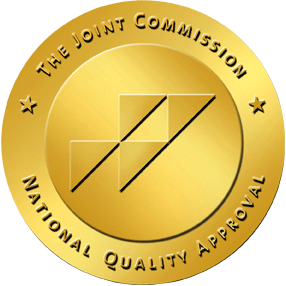When you’re in recovery for a mental health or substance use disorder, the process can feel like an emotional rollercoaster at times. Anxiety, in particular, often surfaces during this vulnerable phase. Adapting to new routines, coping with past traumas, and redefining your identity can naturally fuel worry. However, with the right toolkit, you can learn to manage anxiety effectively and maintain momentum in your recovery journey. Below are proven strategies designed to help you find calm and stability—even when it seems like life is everything but this.
Identify and Acknowledge Your Triggers
The first step in managing anxiety is understanding its root causes. Reflect on patterns by keeping a journal to note times and situations where your anxiety spikes. Over time, you’ll notice recurring themes, such as specific environments, thoughts, or external stressors.
Once you recognize a trigger, give it a name or a label. Rather than letting it remain an overwhelming unknown, labeling it helps you address it more directly. Also, develop an action plan with your counselor, therapist, or support person to create strategies for handling each trigger. This reduces the feeling of helplessness.
Practice Mindfulness and Breathing Techniques
Mindfulness encourages you to remain grounded in the present moment, rather than getting swept away by worries about the past or future. Breath awareness is an example of a mindful practice that involves focusing on your breathing. Close your eyes, inhale through your nose for four counts, hold for four, exhale for four, and pause for four. Repeat this cycle until you feel more centered.
Body scanning is another technique that can prove beneficial. Slowly scan your body from head to toe, noting areas of tension. Release any tightness by gently tensing and relaxing those muscles. Another strategy is grounding, which involves focusing on your immediate surroundings. Pay attention to a sound, a texture, or a scent to anchor your awareness to the present and reduce anxiety levels.
Incorporate Balanced Lifestyle Habits
It’s hard to overstate the power of daily routines and healthy choices when it comes to managing anxiety. Aim for 7-9 hours of consistent sleep, as restlessness and fatigue can amplify anxious thoughts. Moderate exercise—like walking, yoga, or cycling—releases endorphins that counteract stress hormones. Make time for physical activity each day. Also, eat balanced meals to stabilize blood sugar and stay hydrated, as even mild dehydration can increase stress and anxiety.
Seek Professional and Community Support
Recovery often flourishes in an environment of understanding and collaboration. Therapy and counseling can guide you through cognitive behavioral techniques (CBT), identify root causes of anxiety, and offer personalized strategies. Support groups allow you to connect with others who share similar challenges and open you up to valuable coping skills. In some cases, people benefit from medications to help stabilize anxiety symptoms, especially in acute or severe cases.
Challenge Negative Thought Patterns
Anxiety frequently stems from distorted thinking and negative self-talk. Challenge negative thought patterns using tools such as the following:
- Cognitive Restructuring: Notice when you’re caught in a spiral of worst-case-scenario thinking. Ask yourself, “Is this thought realistic? Do I have evidence to support or refute it?”
- Affirmations and Mantras: Replacing anxious thoughts with positive affirmations like “I am capable” or “I can handle what comes my way” can gradually shift your mindset.
- Self-Compassion: Treat yourself as you would a good friend. Recognize that mistakes are part of growth, and gentleness toward yourself fosters resilience.
Use Creative Outlets for Emotional Release
Sometimes words alone can’t express what you’re feeling. Engaging in creative activities can help release pent-up emotions. For instance, journaling gives you a space to free-write your thoughts, no matter how scattered they may seem. Over time, patterns emerge, offering clarity. Drawing, painting, or playing an instrument can also serve as powerful emotional outlets. Even expressive movement and dance allows you to connect with your body and process emotions physically.
Establish Boundaries and Practice Time Management
Feeling overwhelmed by multiple obligations and relationships can heighten anxiety. Be sure to set clear limits with friends, family, and colleagues about what you can handle. Prioritize tasks by creating daily to-do lists, focusing on the most important and time-sensitive items first. Don’t forget to schedule downtime, whether it’s reading, meditating, or simply resting. This ensures you have dedicated moments for self-care throughout the day.
Final Thoughts
Managing anxiety during recovery isn’t about eradicating all worry—it’s about learning healthy ways to cope and adapt. By identifying triggers, embracing mindfulness, leaning on supportive networks, and establishing healthy routines, you create a strong foundation for sustained well-being. Remember, anxiety is often a temporary state, and with consistent practice of these strategies, you can build greater emotional resilience and peace in your recovery journey. To start your recovery and learn essential coping skills, contact Pura Vida Recovery today at 707-879-8432.





